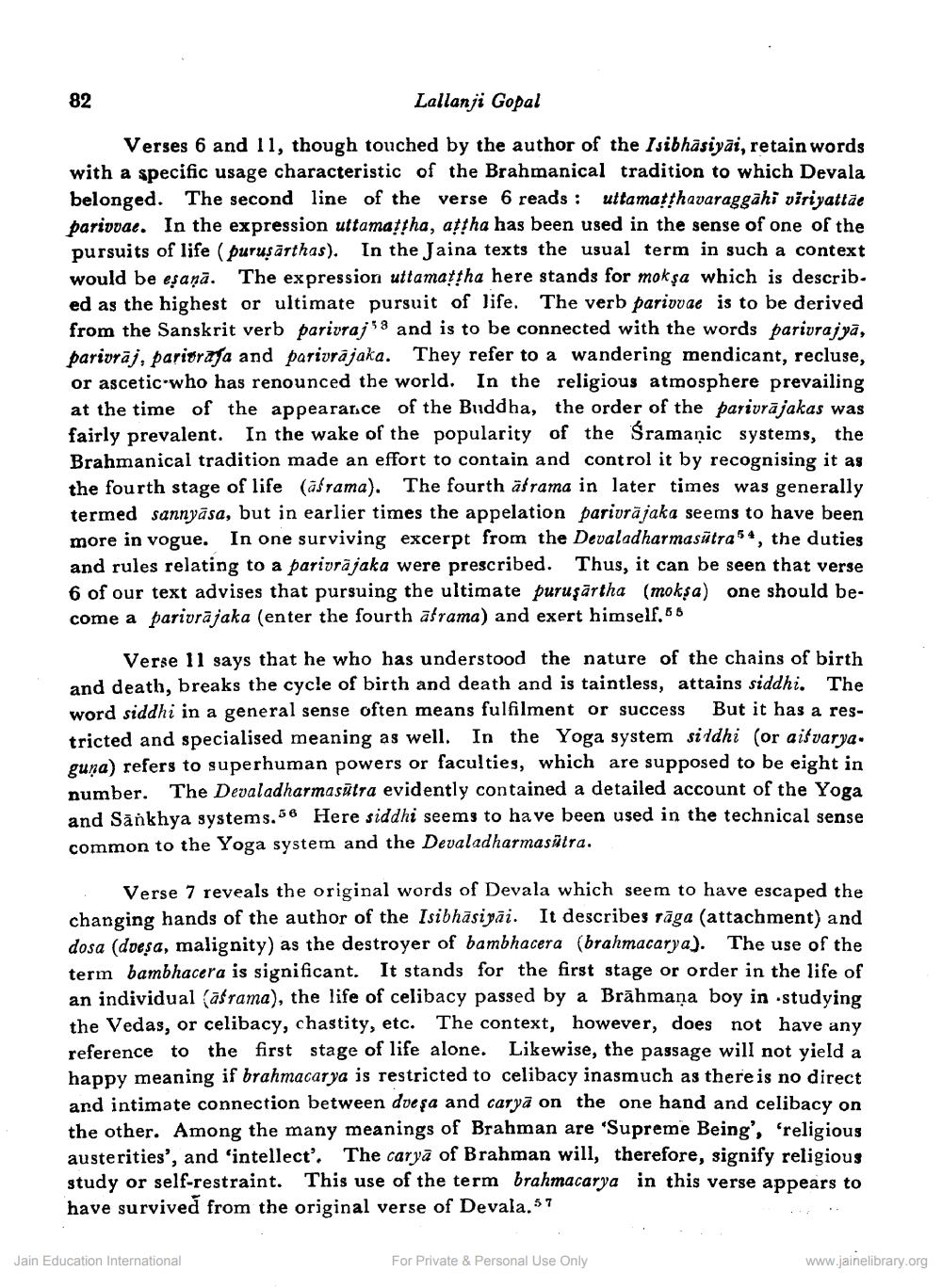Book Title: Asita Deval in Isibhasiyai Author(s): Lallan Gopal Publisher: Z_Aspect_of_Jainology_Part_3_Pundit_Dalsukh_Malvaniya_012017.pdf View full book textPage 9
________________ 82 Lallanji Gopal Verses 6 and 11, though touched by the author of the Isibhâsiyāi, retain words with a specific usage characteristic of the Brahmanical tradition to which Devala belonged. The second line of the verse 6 reads : uttamatthavaraggahi viriyattae pariovae. In the expression uttamatpha, atfha has been used in the sense of one of the pursuits of life (puruşārthas). In the Jaina texts the usual term in such a context would be eşaņā. The expression uttamattha here stands for moksa which is described as the highest or ultimate pursuit of life. The verb parivvae is to be derived from the Sanskrit verb parivraj53 and is to be connected with the words parivrajyā, parivrăj, pariørafa and parivräjaka. They refer to a wandering mendicant, recluse, or ascetic who has renounced the world. In the religious atmosphere prevailing at the time of the appearance of the Buddha, the order of the parivrājakas was fairly prevalent. In the wake of the popularity of the Sramanic systems, the Brahmanical tradition made an effort to contain and control it by recognising it as the fourth stage of life (aśrama). The fourth äśrama in later times was generally termed sannyāsa, but in earlier times the appelation pariuräjaka seems to have been more in vogue. In one surviving excerpt from the Devaladharmasutra54, the duties and rules relating to a parivrä jaka were prescribed. Thus, it can be seen that verse 6 of our text advises that pursuing the ultimate puruşārtha (moksa) one should become a parivrājaka (enter the fourth asrama) and exert himself,66 Verse 11 says that he who has understood the nature of the chains of birth and death, breaks the cycle of birth and death and is taintless, attains siddhi. The word siddhi in a general sense often means fulfilment or success But it has a restricted and specialised meaning as well. In the Yoga system siddhi (or aitvarya. guna) refers to superhuman powers or faculties, which are supposed to be eight in number. The Devaladharmasutra evidently contained a detailed account of the Yoga and Sankhya systems, 56 Here siddhi seems to have been used in the technical sense common to the Yoga system and the Devaladharmasülra. Verse 7 reveals the original words of Devala which seem to have escaped the changing hands of the author of the Isibhāsiyāi. It describes rāga (attachment) and dosa (dvesa, malignity) as the destroyer of bambhacera (brahmacarya). The use of the term bambhacera is significant. It stands for the first stage or order in the life of an individual (asrama), the life of celibacy passed by a Brāhmaṇa boy in .studying the Vedas, or celibacy, chastity, etc. The context, however, does not have any reference to the first stage of life alone. Likewise, the passage will not yield a happy meaning if brahmacarya is restricted to celibacy inasmuch as there is no direct and intimate connection between dveşa and caryā on the one hand and celibacy on the other. Among the many meanings of Brahman are 'Supreme Being', 'religious austerities', and 'intellect. The caryā of Brahman will, therefore, signify religious study or self-restraint. This use of the term brahmacarya in this verse appears to have survived from the original verse of Devala.57 Jain Education International For Private & Personal Use Only www.jainelibrary.orgPage Navigation
1 ... 7 8 9 10 11 12 13 14
